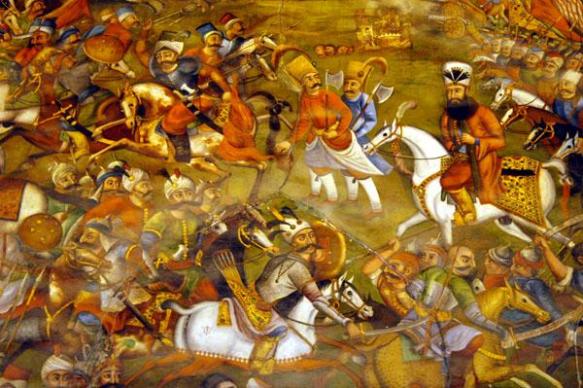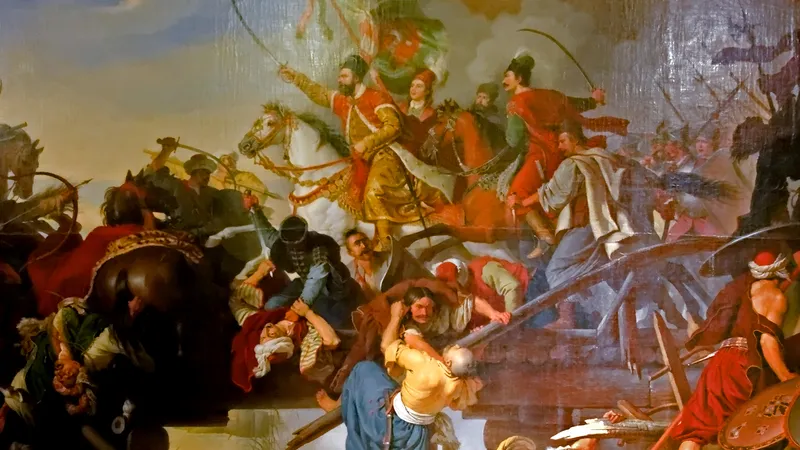The Ottoman-Persian Wars were a series of conflicts that spanned from the 16th to the 18th centuries, marking a significant period of rivalry between two of the greatest empires of the time. These wars were driven by territorial ambitions, religious differences, and the quest for supremacy in the region. As the Ottoman Empire sought to expand its influence eastward, it faced the formidable Safavid Empire, known for its Shiite Islamic faith, in a struggle that would not only shape borders but also impact the socio-political landscapes of both empires. This blog post delves into the origins of these conflicts, the military strategies employed, key battles, diplomatic relations, and the enduring legacy of the Ottoman-Persian Wars, exploring how they influenced the modern history of the Middle East.
Origins of Ottoman-Persian Conflicts
The Ottoman and Persian empires, two of the most powerful states in the early modern period, were engaged in a series of conflicts that were driven by a variety of factors, ranging from territorial ambitions to religious differences, making the origins of their conflicts a complex tapestry interwoven with the threads of history and culture. At the heart of these clashes was the struggle for dominance in the strategically significant regions of the Middle East, where both empires sought to expand their influence and control over trade routes, resources, and populations, inevitably leading to a clash of interests that manifested in military confrontations on numerous occasions. As the Ottomans, who adhered to Sunni Islam, and the Safavids, who championed Shiite Islam, vied for supremacy, the religious dimension further exacerbated their rivalry, creating a volatile atmosphere that fueled animosities and entrenched divisions between the two powerful states. In seeking to understand the origins of the conflicts that arose between the Ottoman and Persian empires, one must consider several underlying factors that were pivotal in shaping their antagonistic relationship, including territorial disputes, ethnic hostilities, and significant religious divides. For instance, the Ottomans' expansionist policies aimed at consolidating their power throughout the Islamic world often brought them into direct conflict with the Persian Safavid Dynasty, which was keen on establishing itself as the preeminent power in Persia and engaging in a contest of legitimacy against its Ottoman rivals. In tandem, the rivalry between these two empires was further complicated by the various tribal and ethnic groups residing in the contested territories, each with their own local allegiances and grievances, thereby adding layers of complexity to an already intricate situation. The historical backdrop of the Ottoman-Persian conflicts can be summarized through a series of key points, which include:
- The rise of the Ottoman Empire in the late 13th century and its territorial expansion into the Middle East.
- The establishment of the Safavid dynasty in Persia in the early 16th century, which promoted Shiite Islam as the state religion and opposed Sunni Ottoman claims to hegemony.
- The competition for control over strategic regions such as Iraq, Kurdistan, and Eastern Anatolia, which were rich in resources and held significant geopolitical importance.
In conclusion, the origins of the Ottoman-Persian conflicts were deeply rooted in a combination of territorial ambitions, religious rivalries, and historical grievances, which coalesced into a series of wars that not only shaped the destinies of these two empires but also influenced the broader historical contours of the Middle East. As each empire endeavored to assert its dominance and validate its claims, the recurring skirmishes and battles reflected not only the militaristic ambitions of their leaders but also the intricate sociopolitical dynamics that characterized the region during a tumultuous phase in world history. Indeed, the legacy of these conflicts continues to resonate, underscoring the complex heritage of a region marked by enduring struggles for power and influence.
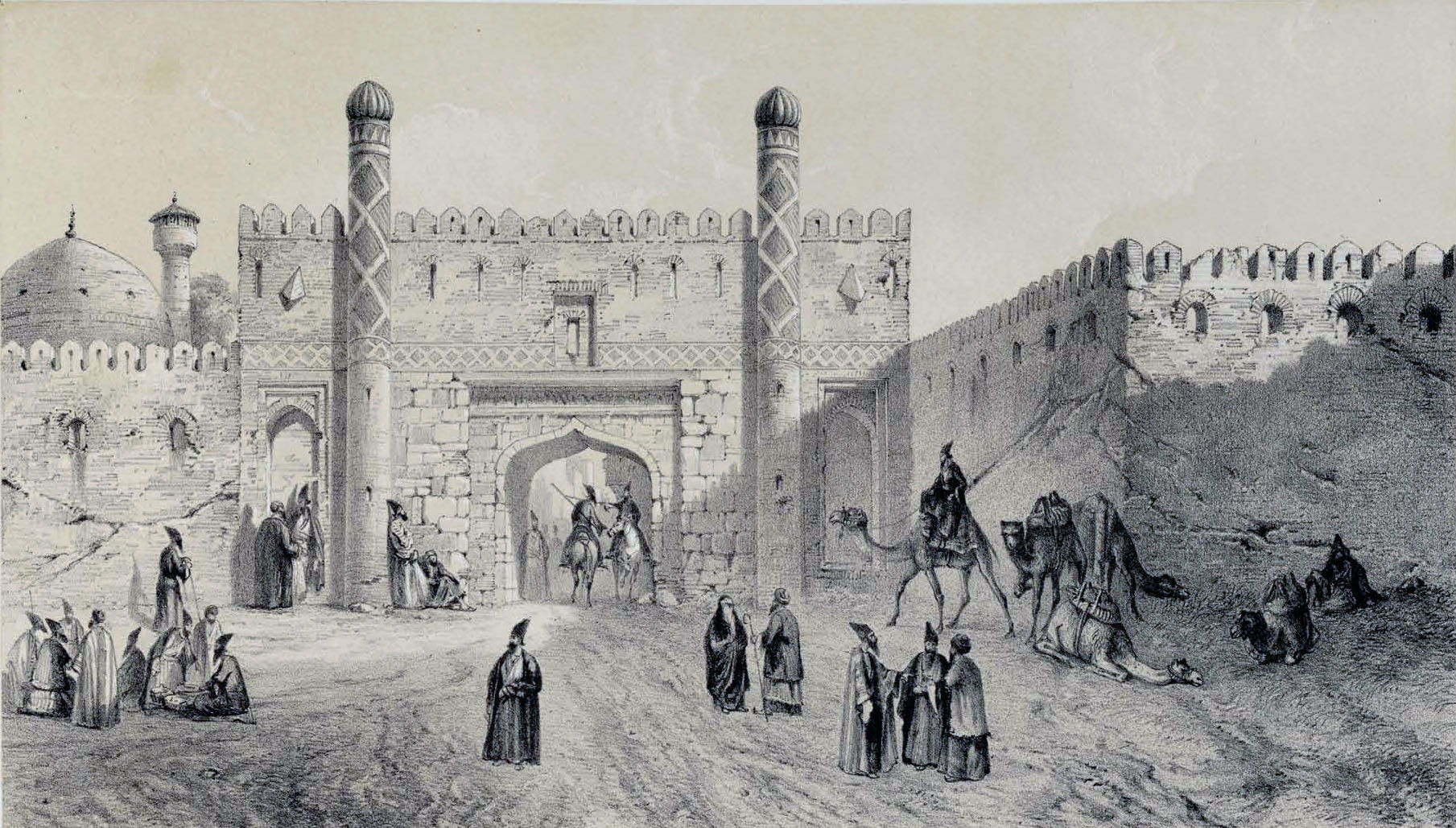
Military Strategies and Tactics
In the complex and turbulent landscape of warfare during the Ottoman and Persian conflicts, various military strategies and tactics emerged that not only reflected the unique philosophies of each empire but also adapted to the evolving nature of warfare, leading to innovative approaches that would impact future generations. The Ottoman forces, known for their ability to blend traditional tactics with emerging technologies, employed a combination of highly mobile cavalry units, disciplined infantry formations, particularly the famed Janissaries, and advanced artillery that changed the face of siege warfare, while the Persian military relied on their own unique cavalry tactics, particularly their use of heavily armored horsemen and archers, to create a formidable force that could withstand the advances of their rivals. This intricate interplay of strategic planning and tactical execution resulted in a series of confrontations that not only shaped the political landscapes of both empires but also illustrated the complex dynamics of military power during this historic period.
Ottoman Military Innovations
The Ottomans revolutionized military strategy with their emphasis on gunpowder technology, which dramatically increased the effectiveness of their artillery units in siege warfare, allowing them to breach the fortifications that previous armies could only dream of overcoming. In addition to their technological prowess, the organizational structure of the Ottoman military also played a vital role in their success on the battlefield, as they established a highly hierarchical chain of command that ensured orders were transmitted efficiently down to the troop level, thus ensuring that their forces could quickly adapt to changing battlefield conditions. Furthermore, Ottoman military campaigns often involved meticulous planning and intelligence-gathering operations, which allowed them to outmaneuver their opponents and exploit their weaknesses effectively.
Persian Tactical Responses
Conversely, the Persian military, while initially focusing on its traditional cavalry tactics, increasingly adapted to counter the Ottoman advancements by emphasizing the utilization of guerilla warfare and strategic withdrawals, techniques that allowed them to preserve their forces and maintain a long-term resistance against the Ottoman advances. The Persians also employed a well-coordinated use of their skilled archers and mounted horsemen, deploying them in a manner that provided both shock value and effective harassment against advancing Ottoman troops, thus exemplifying their understanding of the psychological aspects of warfare. These adaptive tactical responses played a critical role in various battles, allowing the Persians to claim several victories even when vastly outnumbered, and recasting the narrative of the Ottoman-Persian conflicts.
- Advanced use of gunpowder in artillery.
- High mobility of cavalry units, especially Janissaries.
- Emphasis on intelligence and reconnaissance operations.
- Guerilla tactics employed by Persian forces.
- Utilization of skilled archers and heavy cavalry.
Key Battles and Events
Throughout the course of the Ottoman-Persian Wars, a series of significant battles and events not only shaped the territorial dynamics between the two empires but also influenced their political and cultural landscapes, illustrating the fierce rivalry that existed between them and the various strategies each side employed in their pursuit of dominance. Understanding the nuances of these key conflicts provides invaluable insights into the broader context of Ottoman history, revealing how military engagements were often intertwined with political machinations and religious motivations that transcended mere territorial conquest. Among the most notable battles are those that marked turning points in this longstanding struggle, where pivotal decisions made on the field often reverberated well beyond the battlefield. - Battle of Chaldiran (1514): This battle was significant for the Ottomans as it established their supremacy over eastern Anatolia and initiated their further push into Persia. - Battle of Tabriz (1534): An important event that showcased the Ottomans' ability to capture key Persian cities and expand their influence within the region. - Battle of Szigetvár (1566): While primarily seen as a conflict against the Habsburgs, it had implications for Ottoman-Persian relations as it stretched Ottoman resources and attention. - Battle of Djerba (1578): Demonstrated the naval prowess of the Ottomans during this period and its influence on Mediterranean politics alongside the conflict with Persia. - Battle of Nagykanizsa (1600): A crucial clash that highlighted the intersecting interests of different empires vying for control and their implications on Ottoman territorial gains. The military engagements were often accompanied by notable events that could alter the course of the wars. For instance, the Ottomans' takeover of Tabriz in 1534 led to the consolidation of Ottoman power in the region, signaling a shift in the balance of power that would impact future conflicts. The effort put forth in these battles was not only about securing territory; they were often steeped in a quest for prestige and legitimacy, as each empire attempted to align military success with divine favor and political authority in the eyes of their subjects.
| Battle/Event | Date | Outcome |
|---|---|---|
| Battle of Chaldiran | 1514 | Ottoman Victory |
| Battle of Tabriz | 1534 | Ottoman Victory |
| Battle of Szigetvár | 1566 | Ottoman Victory |
| Battle of Djerba | 1578 | Ottoman Victory |
| Battle of Nagykanizsa | 1600 | Stalemate |
Moreover, the repercussions of these battles often extended beyond the immediate military gains or losses, leading to larger strategic ramifications, such as shifting allegiances, increased tensions among local rulers, and shifts in trade routes that would ultimately affect the economies of both empires. The battlefields became stages not just for military confrontation but also for the expression of cultural and religious identities, with each side seeking to assert its influence through displays of valor and divine approval, effectively intertwining warfare with the ethos of Ottoman identity and Persian pride. Understanding these key battles and events within the Ottoman-Persian Wars illuminates the complex interplay between military strategy and political ideology, shedding light on how both empires navigated the turbulent waters of conflict and cooperation throughout their histories, with the legacy of these encounters resonating in the historical consciousness of their descendants. In reflecting upon this turbulent epoch, we gain a deeper appreciation of the Ottoman experience, which was indelibly shaped by such monumental military encounters that were often laden with both historical significance and contemporary relevance.
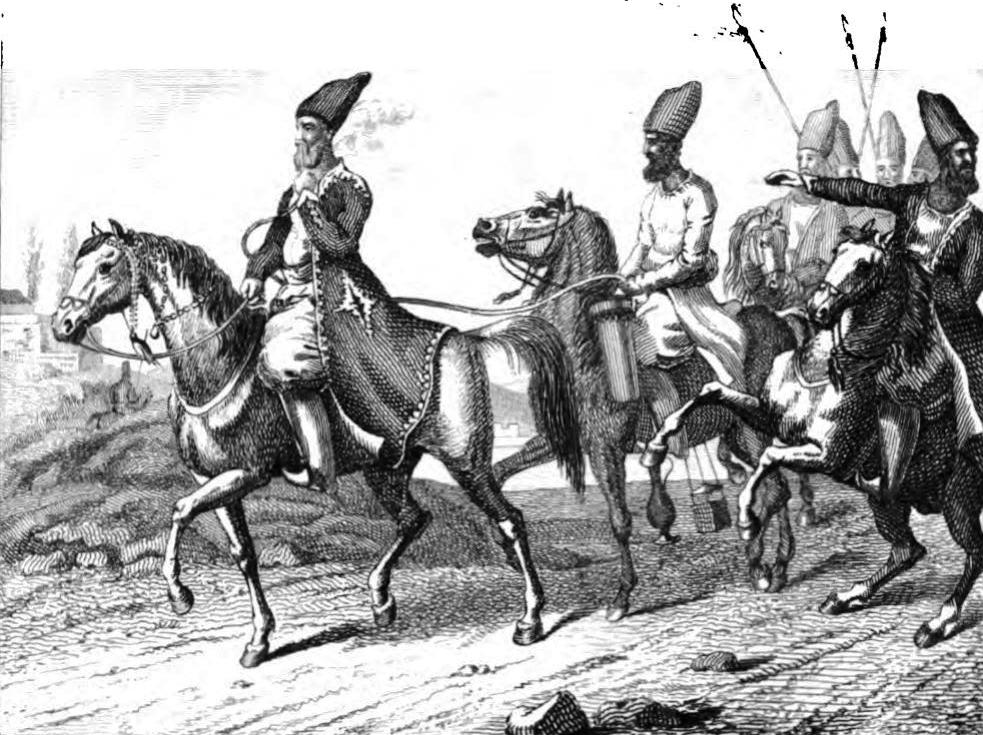
Diplomatic Relations and Alliances
Throughout the tumultuous periods of the Ottoman-Persian Wars, the significance of diplomatic relations and alliances became increasingly pronounced as both empires sought to forge strategic partnerships to enhance their military effectiveness and territorial ambitions, thereby highlighting the intricate web of political maneuvering that characterized the geopolitical landscape of the time. Both the Ottomans and the Persians employed intricate diplomatic strategies, utilizing embassies and envoys to negotiate peace treaties, secure alliances, and manipulate the balance of power in the region, revealing how diplomacy was often as essential to success as military prowess on the battlefield. As these powers navigated the complex interactions of their rivals and allies, it became crucial to form coalitions with other states that could either help bolster their strength or at least serve as a buffer against mutual adversaries. To illustrate this dynamic between the two empires, the following list highlights significant alliances and diplomatic endeavors that shaped the course of their interactions throughout the conflicts:
- The Ottoman Empire's alliance with various Central Asian tribes was aimed at countering Persian influence on their eastern borders.
- Persia often sought alliances with European powers, such as France or Russia, to gain an upper hand in their conflicts with the Ottomans.
- The Treaty of Qasr-e Shirin in 1639 was a notable diplomatic effort to establish a formal boundary between the empires, showcasing a desire for coexistence despite ongoing hostilities.
Despite multiple attempts at collaboration through marriage alliances and negotiated pacts, lasting peace remained elusive between the Ottomans and the Persians, with each empire often resorting to war to achieve their political aims and territorial expansion. This ongoing rivalry was not merely a contest of arms, but one that intertwined with the broader context of regional politics, revealing how diplomatic relations, alongside military confrontations, were integral to understanding the nature of these longstanding conflicts. In many instances, alliances were shaped by shared interests or enmity rather than enduring principles of friendship, as various states would shift allegiances based on the evolving circumstances of power struggles. The table below summarizes some key diplomatic interactions between the Ottoman and Persian empires during their conflicts:
| Year | Event | Outcome |
|---|---|---|
| 1514 | Battle of Chaldiran | Secured Ottoman dominance over eastern Anatolia and northern territories |
| 1639 | Treaty of Qasr-e Shirin | Established a stable border and ended major hostilities |
| 1746 | Alliance attempt between Ottomans and Afghans | Failure, leading to further conflicts |
In conclusion, the checks and balances of diplomacy played a pivotal role in either deepening the divide or momentarily bridging gaps between the Ottoman and Persian empires; yet, the fundamentally divergent goals of expansion and power led to a ceaseless cycle of warfare intertwined with sporadic attempts at diplomacy. These diplomatic relations and alliances illuminate how, despite periods of fierce conflict, there existed a complex interplay of negotiated peace efforts that reflected the ambitions, fears, and aspirations of both empires as they navigated their respective places within the historical narrative of their time. Thus, the story of the Ottoman-Persian Wars is as much a tale of military engagements as it is a testament to the intricate diplomatic relations that influenced the course of history during this era.
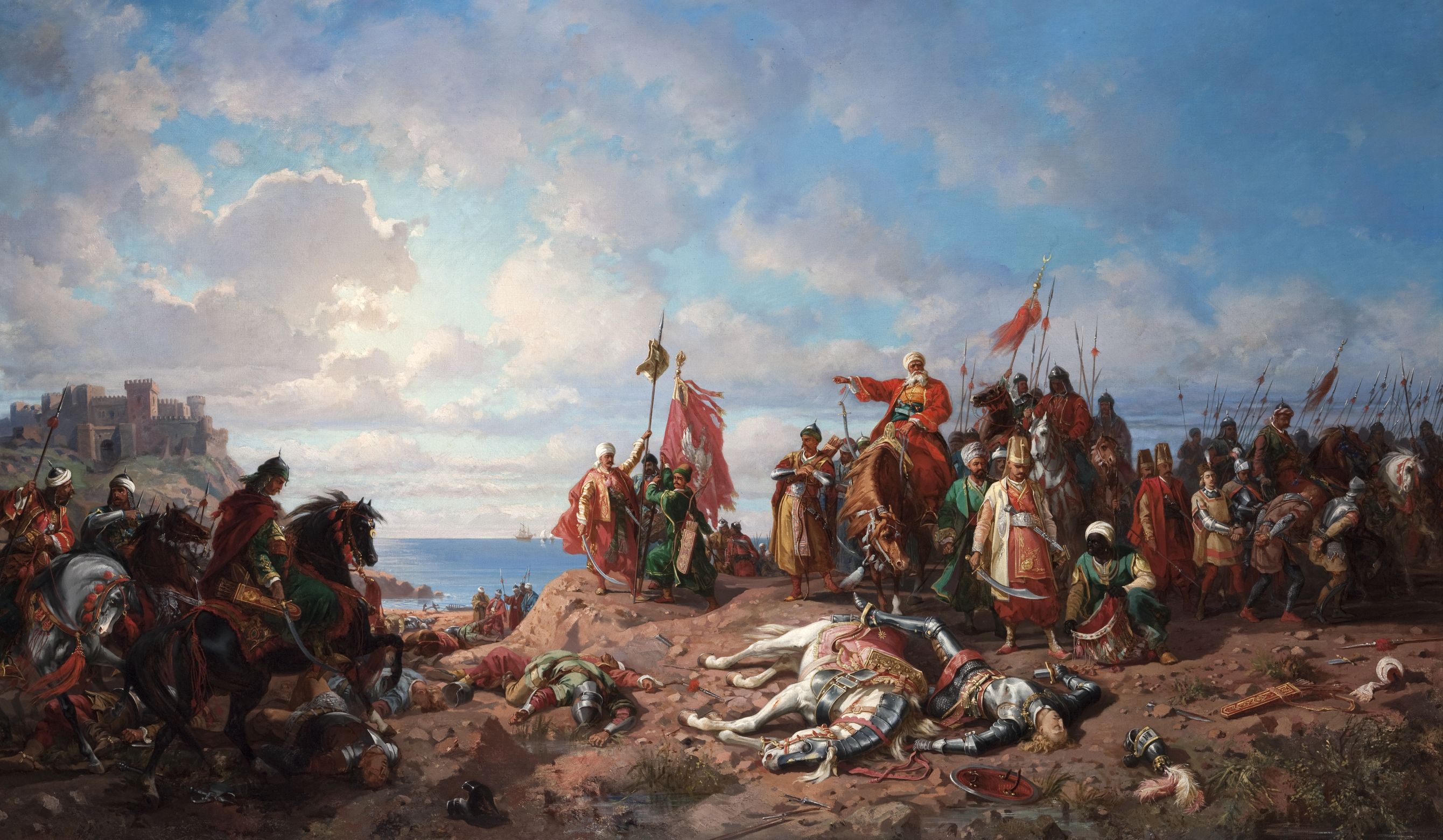
Effects on the Ottoman and Persian Empires
The protracted conflicts between the Ottoman and Persian empires, which spanned over several centuries, had profound effects on both realms, influencing not only their territorial dynamics and political structures but also their cultural and social fabric, as well as their economies, which were often strained by the demands of warfare. The impact of these wars was multifaceted, with both empires experiencing periods of significant territorial expansion during their peaks, yet equally enduring severe losses and setbacks that would shape their future trajectories in various ways. While the Ottomans managed to solidify their control over vast regions at certain points, the Persian Safavid dynasty, with its fervent nationalism and religious zeal, frequently challenged and resisted Ottoman dominance, which ultimately altered the balance of power in the region.
Political Consequences
Political maneuverings in the aftermath of the conflicts led both empires to reevaluate their administrative and military strategies, as they sought to consolidate power internally and fortify their borders against potential invasions. For the Ottomans, the continuous warfare necessitated reforms within their military institutions, prompting a shift toward modernization that would ultimately influence their effectiveness in later European engagements. Conversely, the Safavid dynasty recognized the importance of establishing a more centralized governance structure to mitigate the decline of rural administration and to regain territories lost during their confrontations with the Ottomans.
Cultural and Economic Effects
The cultural repercussions of these wars were equally significant, with both empires witnessing an exchange of ideas, art, and traditions, which laid the groundwork for the development of rich cultural legacies that still resonate today in the region. Economically, the constant strife compelled both empires to innovate in terms of taxation and resource allocation, as they endeavored to sustain prolonged military campaigns, while also leading to a transient decline in trade routes that once flourished due to the instability brought about by battles. Ultimately, in the shadow of such extensive conflicts, both the Ottoman and Persian empires cultivated a complex relationship that swayed not only their respective internal dynamics but also their interactions with neighboring powers, thus redefining the political landscape of the entire Middle East and beyond.
- Shifts in territorial control influenced trade routes.
- Military reforms in the Ottoman empire led to modernization.
- Cultural exchanges enriched artistic and architectural expressions.
- Religious divisions were exacerbated, leading to internal strife.
- Trade experienced fluctuations, impacting economic stability.
Role of Religion in the Wars
The intricate tapestry of the Ottoman-Persian Wars is profoundly intertwined with the religious ideologies that defined the era, as both the Ottoman Empire, primarily Sunni Muslim, and the Safavid Empire, staunchly Shia Muslim, utilized their distinct religious identities not only as a means of legitimizing their political authority but also as a rallying point to galvanize their respective populations in a series of tumultuous conflicts that spanned centuries. The emergence of the Safavid Empire in the early 16th century, which firmly established Shia Islam as the state religion, not only unleashed a fervent commitment among its followers but also provoked a vehement opposition from the Ottomans, who viewed this heretical divergence as a direct affront to their Sunni beliefs, thereby escalating tensions between the two mighty empires. The role of religion in these wars was not merely about theological debates or doctrinal differences; it was deeply rooted in socio-political contexts where leaders, ambassadors, and clergy on both sides invoked religious rhetoric to justify acts of warfare, depict the enemy in demonic terms, and unify their loyal subjects under the banner of defending the true faith, which ultimately transformed these violent confrontations into battles that represented the culmination of religious zeal and political ambition. In fact, the Ottomans often portrayed themselves as defenders of Sunni orthodoxy, rallying their forces under the guise of protecting Muslims from the Shia Safavid threat, while the Safavids, in turn, framed their campaigns as a divine mission to eradicate heresy from the world, thus enshrining their warfare in a moral high ground that resonated with their followers. The ideological clash between Sunni and Shia Islam had significant ramifications not only on the battlefield but also on the social fabric of the empires involved, as populations were often mobilized by religious leaders who provided spiritual justification for territorial gains, while the local populace was sometimes coerced into supporting militant campaigns through a mixture of fervent faith and fear of retribution, creating a volatile environment where religion served both as a sword and shield in the ongoing power struggles that defined the period. For instance, the Safavids employed their religious doctrine to consolidate power domestically while preparing their armies for conflicts with the Ottoman forces, leading to an escalation of hostilities that were as much about territorial domination as they were about religious supremacy, making religion a fundamental component of the prolonged struggle between these two empires. Table of Key Religious Elements in the Ottoman-Persian Wars:
| Empire | Dominant Sect | Main Religious Justifications for War |
|---|---|---|
| Ottoman Empire | Sunni Islam | Defending Sunni orthodoxy against Shia heresy |
| Safavid Empire | Shia Islam | Eradicating heresy and promoting Shia Islam |
In conclusion, the Ottoman-Persian Wars illustrate the powerful interplay between warfare and religion, where both empires extensively leveraged religious identity to not only rally their troops but also to imbue their military campaigns with broader existential significance that resonated deeply with their respective supporters, ultimately ensuring that the violence of the battlefield was enmeshed with the fervor of faith, causing the long-standing animosity to evolve into a historical narrative that continues to be studied and analyzed by scholars in modern times. Therefore, the influence of religion during these conflicts cannot be understated, as it played a pivotal role in shaping the motivations, strategies, and perceptions on both sides, marking the Ottoman-Persian Wars as much a clash of arms as a clash of beliefs that defined the landscape of the Middle East for centuries to come. Moreover, the repercussions of these religiously driven conflicts would echo through history, informing not just the political boundaries of the region but also the cultural exchanges and enmities that persist to this day, thereby securing the Ottoman and Persian legacies within the grand narrative of world history. The complex relationship between state power and religious authority in these conflicts remains a profound testament to the enduring impact of faith in shaping political landscapes and national identities that transcend mere territorial ambitions.
Leaders and Commanders
Throughout the tumultuous period marked by the Ottoman-Persian Wars, a myriad of influential figures emerged who not only shaped the respective destinies of the Ottoman and Persian Empires but also left a lasting imprint on the broader tapestry of history; these leaders and commanders were tasked with navigating the complex interplay of military strategy, politics, and cultural identity, each exhibiting a unique blend of charisma, tactical acumen, and ruthless ambition that defined their age and influenced the course of the conflict. Among these formidable figures, Sultan Suleiman the Magnificent stands out prominently as a pivotal leader for the Ottomans during the height of their territorial expansion, overseeing campaigns that extended the borders of his empire and asserting Ottoman dominion in pivotal regions, while his Persian counterpart, Shah Abbas I, emerged as an equally formidable force, revitalizing the Safavid dynasty and implementing sweeping reforms that bolstered his military and centralized authority, striving to establish Persian supremacy over the contested frontiers that characterized their tumultuous relationship.
Key Leaders of the Ottoman Empire
Legacy of the Ottoman-Persian Wars
The enduring legacy of the Ottoman-Persian Wars, which spanned over several centuries and were characterized by a series of conflicts primarily fought between two of the greatest empires of their time, is not merely confined to military strategies or territorial changes; rather, it permeates through cultural, political, and religious transformations that have significantly shaped the historical trajectory of both the Ottoman and Persian empires. As these two formidable powers engaged in fierce rivalry, their battles and diplomatic interactions fostered a complex legacy that influenced not only their respective regions but also the broader historical landscape of the Middle East, creating a rich tapestry of intertwining cultures, languages, and ideologies. One of the foremost effects of the Ottoman-Persian Wars was the profound impact on national identities, wherein both empires sought to instill a sense of belonging among their citizens through the promotion of collective memories surrounding the conflicts, which not only enhanced their legitimacy but also solidified their power over diverse populations. This process of identity formation and cultural pride was bolstered by the competitive nature of these empires’ ambitions, as each sought to portray themselves as the rightful heirs to a glorious past, leading to the revitalization of certain artistic and literary traditions that continue to be celebrated in modern times. Moreover, the legacy of these wars also extends to contemporary geopolitics, where historical grievances and cultural memories remain embedded in the collective consciousness of the nations once ruled by the Ottomans and Persians, influencing current diplomatic relations and interactions. For example, the national borders that were established in the aftermath of these conflicts laid the groundwork for modern states and the ethnic compositions that define them today, often resulting in ongoing disputes and tensions, particularly in areas where ethnic minorities and historical claims intersect. In conclusion, the Ottoman-Persian Wars served as catalysts for change that resonated through centuries, shaping not only the destinies of the empires involved but also capturing the imaginations of future generations. As a result, the legacy remains a pivotal subject that intertwines themes of conflict, culture, and identity, and it continues to inspire scholarly exploration, artistic expression, and public discourse around the historical narratives forged in the heat of battle. The intricate patterns of cultural exchange, dynamic interactions, and mutual influences may very well be the most profound legacies of these historic confrontations, standing as a testament to the complex and often contentious relationship fostered by the Ottoman and Persian empires throughout their storied past.
Frequently Asked Questions
What were the Ottoman-Persian Wars?
The Ottoman-Persian Wars were a series of conflicts between the Ottoman Empire and various Persian dynasties, primarily the Safavids, from the 16th to the 19th centuries.
What were the main causes of the Ottoman-Persian Wars?
Key causes included territorial disputes, religious differences, and competition for regional dominance between the Sunni Ottomans and the Shia Persians.
When did the first major conflict occur during the Ottoman-Persian Wars?
The first major conflict occurred in 1532 with the Ottoman campaign against the Safavid Empire, marking the beginning of a long series of engagements.
Which battle was significant during the Ottoman-Persian Wars?
The Battle of Chaldiran in 1514 was significant as it established Ottoman supremacy in Eastern Anatolia and set the tone for future conflicts.
How did the Ottoman-Persian Wars impact the local populations?
The wars led to significant loss of life, displacement of communities, and shifts in power dynamics in the regions affected, often resulting in social and economic turmoil.
What role did religion play in the conflicts?
Religion played a central role, as the Sunni Ottomans and Shia Safavids viewed each other as heretical, which intensified the rivalry and justified military actions.
What was the outcome of the Ottoman-Persian Wars?
The wars eventually solidified Persian identity under the Safavid rule while also expanding Ottoman territories, leading to a long-standing rivalry that affected Middle Eastern politics.


